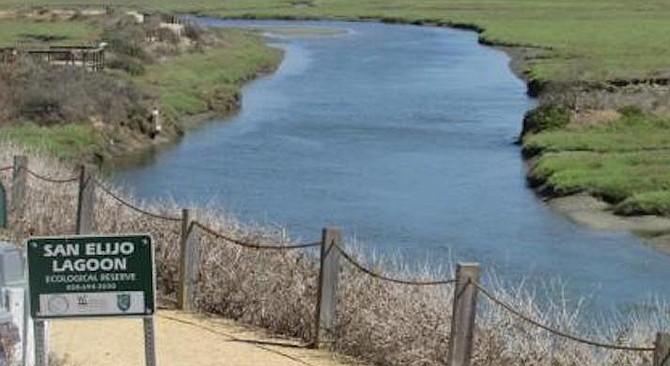 Facebook
Facebook
 X
X
 Instagram
Instagram
 TikTok
TikTok
 Youtube
Youtube

Most wastewater treatment plants rely on microorganisms to dine on sewage and render it harmless during secondary treatment; and, much like wine and sourdough bread, if the beneficial bugs die, what’s left is an unappetizing mess.
That’s what happened at the San Elijo Joint Powers Authority wastewater treatment plant starting January 19 this year when rain water and run-off leeched into the pipes transporting wastewater to the plant, adding a lot of salt to the incoming waste. The salty water killed the beneficial bugs, and the water being treated wasn’t fully cleaned, leaving the plant with three days of too many suspended solids in the wastewater pumped into the ocean.
“If you get a toxin in your plant, it takes three to six days to get it out of the system,” says Michael Thornton, general manager for the JPA. “We weren’t sure precisely where the saltiness came from, but we have a lot of pipes in the coastal low lying areas and the water actually leaches into the pipes.”
The plant is located adjacent to the San Elijo Lagoon, in the low part of Manchester west of the I-5. It serves 32,000 homes and businesses in Solana Beach, part of Encinitas, and part of Rancho Santa Fe, and shares its ocean outfall with Escondido, with a maximum capacity of 5,250,000 gallons a day.
According to the San Diego Regional Water Quality Control Board, the numbers reported by the plant were high — as much as 10 times the allowed amounts of suspended solids – for a week.
When the bugs die, wastewater plants turn to similar operations for help.
“We called other wastewater treatment plants and said we need some seed sludge,” he explained. “We sent a tanker to pick up 35,000 gallons of sludge, brought it back and added it, and monitored it to be sure the seeding worked.”
The first three tries (105,000 gallons of borrowed sludge) did not take — there was still too much salt in the fermentation pools and the guest bugs died. But the fourth load of sludge worked — the microorganisms survived and thrived.
Within days, the plant was again meeting the standards for secondary treatment and tertiary treatment set by the State Water Quality Control Board.


Most wastewater treatment plants rely on microorganisms to dine on sewage and render it harmless during secondary treatment; and, much like wine and sourdough bread, if the beneficial bugs die, what’s left is an unappetizing mess.
That’s what happened at the San Elijo Joint Powers Authority wastewater treatment plant starting January 19 this year when rain water and run-off leeched into the pipes transporting wastewater to the plant, adding a lot of salt to the incoming waste. The salty water killed the beneficial bugs, and the water being treated wasn’t fully cleaned, leaving the plant with three days of too many suspended solids in the wastewater pumped into the ocean.
“If you get a toxin in your plant, it takes three to six days to get it out of the system,” says Michael Thornton, general manager for the JPA. “We weren’t sure precisely where the saltiness came from, but we have a lot of pipes in the coastal low lying areas and the water actually leaches into the pipes.”
The plant is located adjacent to the San Elijo Lagoon, in the low part of Manchester west of the I-5. It serves 32,000 homes and businesses in Solana Beach, part of Encinitas, and part of Rancho Santa Fe, and shares its ocean outfall with Escondido, with a maximum capacity of 5,250,000 gallons a day.
According to the San Diego Regional Water Quality Control Board, the numbers reported by the plant were high — as much as 10 times the allowed amounts of suspended solids – for a week.
When the bugs die, wastewater plants turn to similar operations for help.
“We called other wastewater treatment plants and said we need some seed sludge,” he explained. “We sent a tanker to pick up 35,000 gallons of sludge, brought it back and added it, and monitored it to be sure the seeding worked.”
The first three tries (105,000 gallons of borrowed sludge) did not take — there was still too much salt in the fermentation pools and the guest bugs died. But the fourth load of sludge worked — the microorganisms survived and thrived.
Within days, the plant was again meeting the standards for secondary treatment and tertiary treatment set by the State Water Quality Control Board.
Comments